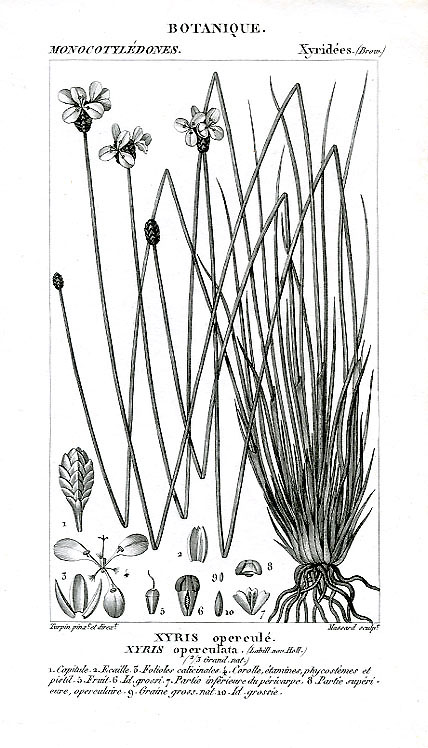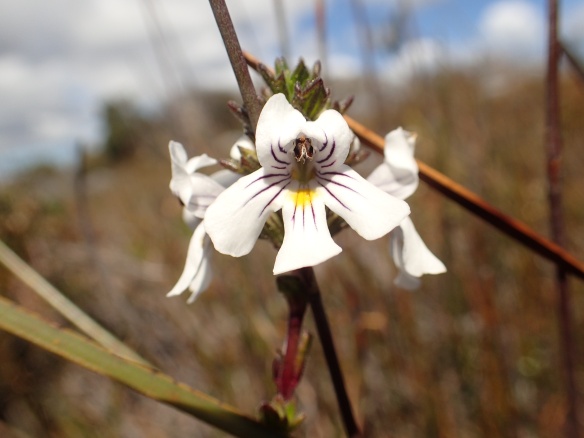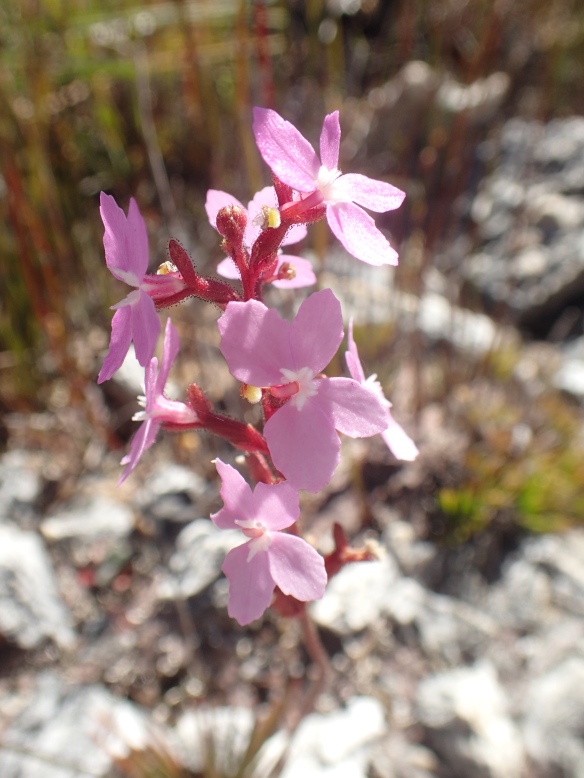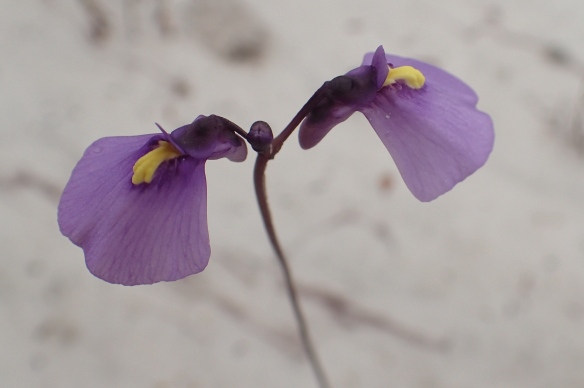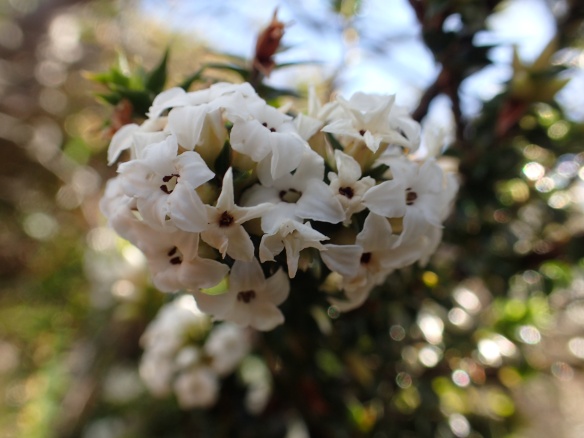Xyris comes from the Greek for “cutting knife” or “sword”. Fortunately, their leaves resemble dangerous weapons in shape only; unlike much of the vegetation of the button-grass moorlands, they are smooth and gentle on the skin.
There are four types of Xyris in Tasmania – these sedges are commonly known as yellow-eyes due to their quite showy, three-petalled yellow flowers, held aloft on elongated, loosely twisted stems.
Although Xyris flowers in summer, they were pretty much done by the time I made it to Melaleuca. However, you can find many pretty photos of them on Flickr here.


